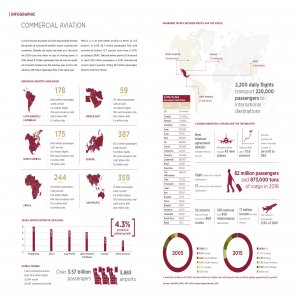Budget, Autonomy Restraining Mexico's Space Program

STORY INLINE POST
Q: What was the value of that shuttle mission for the country?
A: Sending a Mexican to space taught us a lot. The mission required experiments designed by Mexican scientists working in Mexican institutions, but these scientists did not know what to research in space or how to perform experiments in microgravity. This opportunity was a trigger for the local scientific community to generate experiments that could be performed inside the cabin of a space shuttle. There were many challenges to design these experiments, including budget, a short time frame and meeting NASA’s requirements for energy consumption, weight, volume and safety. Our scientific community learned a lot from the experiments that were chosen and from the logistics and protocols that were developed to conduct them.
Q: How has the space industry changed since your mission?
A: Telecommunications services in Mexico have seen great change during the past 32 years and the Morelos satellites have been essential to this process as they allowed companies and government agencies to install their own satellite networks. These networks increased the speed of trade and banking processes and gave educational television a wider reach. It was a fruitful and valuable investment. But in terms of Mexico’s space industry, nothing has changed. Although there have been newer generations of satellites financed by both the public and private sectors, they have only included imported technology.
Close to 35 years ago, the country hired Hughes to build the first Mexican satellites and the country made the mistake of not including any Mexican technology due to the lack of appropriate planning. Although Mexico has a solid aeronautics industry, the country still needs to lay the foundations for a real aerospace industry. We need to be able to generate or at least assemble space technology on Mexican soil just as we assemble aircraft. This should happen through the investment of companies that already have a solid presence in Mexico’s aeronautics industry.
Today, the Mexican aerospace industry is a trendy topic in the media and government, but Mexico only has an aeronautics industry and not a space sector. It is necessary for SCT and AEM to start thinking about the next generation of satellites and to demand that their manufacturers invest in Mexico and generate both knowledge and human resources so that at least 5 percent of the satellite’s components are made in Mexico. But this process must be planned years in advance as it requires building facilities and reaching agreements with these companies. This would bring Mexico national prestige, motivate younger generations, strengthen research centers and support the entry of companies that look forward to taking advantage of Mexican human resources and prevent the exodus of local talent.
Q: What are the main challenges in educating and training space professionals in Mexico?
A: The main challenge is convincing prospective students that they will find a job. If Mexico lacks an aerospace industry, aerospace engineering students will not see a future in Mexico and will emigrate for work and to continue studying. Although we feel proud that there are Mexicans working on space projects in Europe and the US, it is a mistake to allow talent to leave. We need to invest in research centers and support universities that offer aerospace programs.
Aerospace engineering programs in Mexico have existed for less than 10 years. In some states, universities that offer these programs have created hybrid academic curriculums that focus on aeronautics, with only a little taste of aerospace. There is no academic institution in Mexico City offering an undergraduate degree in aerospace engineering. IPN offers an undergraduate degree in aeronautical engineering and plans to offer a master’s degree in aerospace engineering. I have proposed the creation of an aerospace engineering career at UNAM that will hopefully start soon.
Q: What is AEM’s role in the development of space technology and training?
A: Unfortunately, AEM has no ongoing projects. The budget for this dependency is insufficient as it barely reaches about MX$100 million (US$5.5 million) per year. There was an initiative some years ago to develop a remote sensing satellite to monitor Mexico’s territory and detect wildfires. But these kinds of projects usually remain in the planning stage. For instance, the Orbit Plan developed by AEM is not much more than a document whose content nobody remembers. AEM needs a higher budget to invest in projects that can be concluded. As long as we lack a tangible project that is the responsibility of AEM and that is given the appropriate follow- up, Mexico will not advance in space technology. The lack of results, experience and credibility will make it difficult for foreign space agencies to sign the collaboration agreements that would allow Mexico to participate in a space mission of any kind.
Q: What does AEM need to better promote the advance of Mexico’s space industry?
A: AEM needs to be autonomous. It requires more resources to plant seed investments and it needs to work with academic institutions to lay the foundations of a real aerospace industry in Mexico. It also needs to start working with the governments of states that have consolidated aeronautic clusters to develop aerospace projects that ensure ROIs for the government. AEM needs an annual budget of at least around US$100 million to work properly, so the agency cannot really do much today. Space agencies internationally operate under much larger budgets than AEM. For instance, France assigns at least €2.3 billion a year to its space agency CNES. Spain provides around €140 million for its space projects. And Brazil’s space budget is on the order of US$100 million. When AEM was created, Congress decided it should be part of SCT because this ministry used to operate Mexico’s satellites. But the main function and mindset of SCT is not to develop technology or advance scientific research, but to build roads and bridges and assign radio frequencies. So SCT has not given AEM its due importance.
Q: How important are new players like SpaceX in the aerospace market?
A: Today, NASA counts on Russia to send its astronauts to space. But the entrance of companies like SpaceX and Boeing to the market will pull prices down and even make it more affordable for Mexicans to go into space. It was SpaceX that placed the last Mexican satellite in orbit. Elon Musk is doing admirable work. His new project to send a cargo mission to Mars is ambitious. SpaceX will provide the capsule and send payloads to Mars while NASA will support the project by granting access to the Deep Space Network in exchange for all the data gathered during these missions. But there is uncertainty on whether this project will become a reality.
























